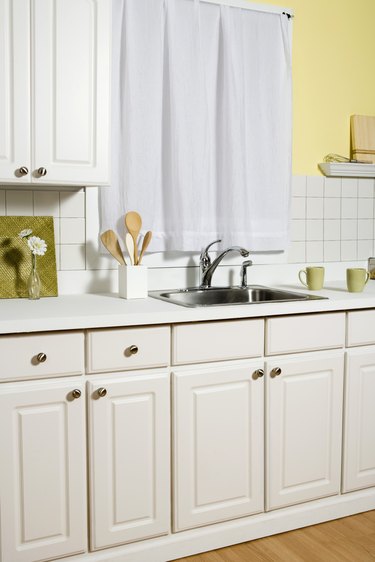
Garbage disposals are tightly sealed units. However, there are several connection points which are vulnerable to leaks. By ensuring connections are tight at each of these locations, kitchen cabinets will be kept dry and the garbage disposal will function properly for years to come.
Connections on a Garbage Disposal
Video of the Day
Garbage disposals can be installed in a variety of ways depending on sink and plumbing configurations, but there are always three main connection points: the intake tube, the discharge tube and an optional dishwasher intake. On a new garbage disposal the dishwasher intake will be have a knock-out installed that must be removed if you want to connect the dishwasher line to the disposal.
Video of the Day
Identify the Leak Location
Turn the water on in the sink and check each of the three connection points. You may have to dry off the connections and restart the water, depending on how much water is actually leaking.
Repair the Leak
If the water is leaking from either the intake or the discharge, you may just have a simple loose connection. If the connections are tight, there may be a crack in the PVC pipe, or the pipe may have been cut at an angle. Disconnect the fitting and check for damage or poor cuts. If the leak is coming from the dishwasher intake and there is a dishwasher connected, perform the same integrity checks on that line and connection. If there is no dishwasher connected, the knock-out may be damaged. If it is, cover the connection with a PVC cap and silicone it in place.
Check for Blockages
If the disposal continues to leak after verifying all of the connections, the disposal may be backing up due to a clog. Carefully remove the disposal by disconnecting all fittings and pull it out of the cabinet. Use a flashlight to inspect the inside as well as the intake and discharge tubes and clear any blockages.